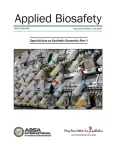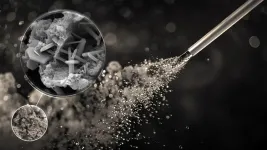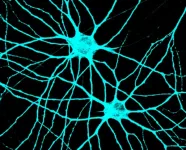(Press-News.org) COLUMBUS, Ohio – Adults who continuously played organized sports through their youth have fewer symptoms of anxiety and depression than those who never played or those who dropped out, a new study finds.
And those who dropped out of sports had poorer mental health than those who never played at all.
But many more people drop out of youth sports than play continuously until they are 18, said Chris Knoester, senior author of the study and professor of sociology at The Ohio State University.
“If you play and stick with sports, it’s a positive for your mental health, but if you play and drop out it seems to be negative – and most kids drop out,” Knoester said.
The study, published today (June 26, 2024) in the Sociology of Sport Journal, showed that most people dropped out of sports because they weren’t having fun or felt they weren’t good enough. That suggests ways youth sports can be improved to help kids, said study lead author Laura Upenieks, assistant professor of sociology at Baylor University.
“Our findings about why kids drop out of organized sports suggests that the current environment is less than ideal for everyone, and that the barriers to participation need to be given greater attention,” Upenieks said.
The study used data from the National Sports and Society Survey, conducted in 2018 and 2019 by Ohio State. It included a sample of 3,931 adults from across the country who answered questions about their sports participation as children and their current anxiety and depression symptoms.
Results showed 35% of the participants did not play organized sports at all, 41% participated and dropped out and 24% participated continuously until age 18.
Those who participated in organized sports continuously while growing up reported lower depressive symptoms and symptoms of anxiety than others.
Those who dropped out had the worst mental health profile, with those who never played in the middle.
Knoester emphasized that most participants didn’t have clinical levels of depression or anxiety, and the differences between the three groups were relatively modest. But the differences still mattered.
By far the most common reason cited for dropping out was “not having fun,” which nearly half of respondents (45%) identified. The next most common reason was feeling like they were not a good player (31%). Other reasons for dropping out were wanting to focus on grades (16%), having a health problem or injury (16%), not being able to afford sports (16%), having an issue with team members (15%) and having an interest in other clubs and activities (14%).
Notably, 8% said they dropped out because they had been abused by a coach.
While dropping out of sports was associated with poorer mental health, “not all reasons for dropping out had the same effects,” Upenieks said.
Interpersonal reasons for dropping out – including not having fun, not getting along with team members and being abused by a coach – were associated with adult depressive and anxiety symptoms.
Those who couldn’t afford sports and sporting equipment also showed poorer mental health.
But those who dropped out in order to focus on grades actually showed lower depressive symptoms, the study found.
“Prioritizing education predicts better mental health as an adult,” Knoester said.
Many previous studies have focused on the impact of playing sports – or not playing – on adult outcomes. But this study is one of the first to look at what happens when youth quit sports, Knoester said, and it shows that persistence in playing is an important issue.
“Unfortunately, it is not a simple story of playing sports is good for kids,” he said. “It is complicated by whether kids stick to playing sports and the reasons why they do stick to it or quit.”
It is easy to see why sports can be good for those who are able to continue with it to adulthood, Upenieks said.
“The longer that youth are exposed to a positive and encouraging sporting environment, the more likely they are to develop habits that are conducive to long-term mental well-being, such as a commitment to regular exercise and collaborating with others as part of a team,” she said.
The fact that so many kids quit shows that organized sports often don’t provide a positive environment. But there are steps adults can take to improve that environment.
For one, sports should be safe for kids. The fact that 8% said they were abused by coaches is particularly alarming, the researchers said.
And the finding that nearly half of kids quit because they weren’t having fun and about a third dropped out because they felt they weren’t good enough should also be a wake-up call, Knoester said.
“We need to improve youth sports so that it supports positive experiences for everyone and makes it more enjoyable,” he said.
While winning is part of sports, it may be that adults overemphasize that aspect and ruin the experience for many young people.
“Most kids are looking to have fun with their friends and support and encourage each other,” Upenieks said. “It doesn’t have to be all serious.”
Knoester added: “Our results suggest that by taking away the fun and making kids feel they aren’t good enough, there could be cascading effects in terms of hurting self-esteem and confidence that could reverberate through to adulthood.”
END
Playing youth sports linked to better mental health in adults
Depression, anxiety are worst for those who played and quit
2024-06-26
ELSE PRESS RELEASES FROM THIS DATE:
Researchers find genetic stability in a long-term Panamanian hybrid zone of manakins
2024-06-26
We often think of species as separate and distinct, but sometimes they can interbreed and create hybrids. When this happens consistently in a specific area, it forms what’s known as a hybrid zone. These zones can be highly dynamic or remarkably stable, and studying them can reveal key insights into how species boundaries evolve—or sometimes blur. In a new study published in Evolution, researchers at the University of Illinois Urbana-Champaign describe a hybrid zone between two manakin species in Panama that ...
Special Issue of Applied Biosafety focuses on synthetic genomics
2024-06-26
In its first special issue on Biosafety and Biosecurity Considerations of Synthetic Genomics, the first part of a two-part special issue of the peer-reviewed journal Applied Biosafety focuses on the growing availability of customizable nucleic acid sequences and genomes from commercial sources. The issue also describes the advancements in desktop synthesis devices that enable the creation of on-demand nucleic acids. Click here to read the special issue now.
The rapid technological advancements described in part one of this two-part special issue are raising concerns among biosecurity experts and policymakers. The manuscripts in this issue explore the challenges, opportunities, and ...
Simple new process stores CO2 in concrete without compromising strength
2024-06-26
By using a carbonated — rather than a still — water-based solution during the concrete manufacturing process, a Northwestern University-led team of engineers has discovered a new way to store carbon dioxide (CO2) in the ubiquitous construction material.
Not only could the new process help sequester CO2 from the ever-warming atmosphere, it also results in concrete with uncompromised strength and durability.
In laboratory experiments, the process achieved a CO2 sequestration efficiency of up to 45%, meaning that nearly ...
Osiris 39 examines the role of disability in the history of science
2024-06-26
Disability studies has gained prominence in recent years, transforming fields ranging from design to literary studies with insurgent approaches to access and representation. The newest volume of Osiris, “Disability and the History of Science,” extends this movement to ask how disability has been a central, if unacknowledged, force in the scientific disciplines and the history of science. The volume examines the many roles that disability and disabled people have played throughout the history of science, calling attention to the shaping of scientific knowledge production by disability.
Editors Jaipreet Virdi, Mara Mills, and Sarah F. Rose, in their introduction ...
AI-based Alphafold: Its potential impact on predictive medicine
2024-06-26
AlphaFold is an outstanding example of artificial intelligence’s computational capabilities in accurately predicting intricate protein structures. A new Review article explores AlphaFold’s recent advancements and its potential impact on predictive medicine. The article is published in the peer-reviewed journal AI in Precision Oncology. Click to read the articles now.
Vivek Subbiah, MD, from the Sarah Cannon Research Institute, and coauthors, describe a shift toward predictive medicine, in which AI, integrated with genomic data, ...
A heart of stone: Study defines the process of and defenses against cardiac valve calcification
2024-06-26
CHAMPAIGN, Ill. — The human body has sophisticated defenses against the deposition of calcium minerals that stiffen heart tissues, researchers at the University of Illinois Urbana-Champaign and collaborators at UCLA Health and the University of Texas at Austin found in a new study that provides the first detailed, step-by-step documentation of how calcification progresses.
“Heart disease is the leading killer annually — about 18 million deaths per year — and that number is growing. A large proportion is the result of calcification,” said study leader Bruce Fouke, a U. of I. professor of earth ...
Understanding quantum states: New FAMU-FSU research shows importance of precise topography in solid neon qubits
2024-06-26
Quantum computers have the potential to be revolutionary tools for their ability to perform calculations that would take classical computers many years to resolve.
But to make an effective quantum computer, you need a reliable quantum bit, or qubit, that can exist in a simultaneous 0 or 1 state for a sufficiently long period, known as its coherence time.
One promising approach is trapping a single electron on a solid neon surface, called an electron-on-solid-neon qubit. A study led by FAMU-FSU College of Engineering Professor Wei Guo that was ...
Review of pathogenesis, research and treatment of amyloidosis published in New England Journal of Medicine
2024-06-26
(Boston) — AL (immunoglobulin light chain) amyloidosis is a rare disease that often results in progressive organ dysfunction, organ failure and eventual death.
Clonal plasma cells in the bone marrow secrete free light chains into circulation. These light chains are part of immunoglobulins, also called antibodies. But in this disease, light chains misfold and aggregate into amyloid fibrils that deposit in organs and tissues.
In a review article of AL amyloidosis “Systemic Light Chain Amyloidosis,” Vaishali Sanchorawala, MD, director of the Amyloidosis Center at the Chobanian & ...
New research tools reveal the dynamics behind breaking a sweat
2024-06-26
Excessive heat across the United States is making this summer a season of sweat. Perspiration and its evaporation are crucial to keeping us cool when things get hot. But our understanding of how sweat evaporates is limited to the profuse phases of the process, when our bodies are coated in a sticky film or even pools of perspiration. Relatively is little is known about the dynamics behind initial phases of sweating, when tiny droplets are emitted by individual sweat glands and then quickly evaporate.
“There are mechanical engineering researchers around the world, myself included, who are devoted to understanding the different parameters of droplet behavior on ...
Neuroscience research leverages stem cells to understand how neurons connect and communicate in the brain
2024-06-26
Newly published research from Colorado State University answers fundamental questions about cellular connectivity in the brain that could be useful in the development of treatments for neurological diseases like autism, epilepsy or schizophrenia.
The work, highlighted in the Proceedings of the National Academy of Sciences, focuses on how neurons in the brain transmit information between each other through highly specialized subcellular structures called synapses. These delicate structures are key to controlling many processes across the nervous system via electrochemical ...
LAST 30 PRESS RELEASES:
New modeling approach sheds light on rare gut disease
Study documents potentially hazardous flame retardants in firefighter gear
Can certain bacteria regulate aging of the immune system and its related alterations?
AI model helps diagnose often undetected heart disease from simple EKG
There are fewer online trolls than people think
Cell membrane fluctuations produce electricity
Jeonbuk National University study shows positive parenting can protect adolescents against self-harm
Surface-engineered ZnO nanocrystals to tackle perfluoroalkyl substance contamination
This new understanding of T cell receptors may improve cancer immunotherapies
A new fossil face sheds light on early migrations of ancient human ancestor
A new immunotherapy approach could work for many types of cancer
A new way to diagnose deadly lung infections and save lives
40 percent of MRI signals do not correspond to actual brain activity
How brain-inspired algorithms could drive down AI energy costs
Gum disease may be linked to plaque buildup in arteries, higher risk of major CVD events
Contrails are a major driver of aviation’s climate impact
Structure of dopamine-releasing neurons relates to the type of circuits they form for smell-processing
Reducing social isolation protects the brain in later life
Keeping the heart healthy increases longevity even after cancer
Young adults commonly mix cannabis with nicotine and tobacco
Comprehensive review illuminates tau protein's dual nature in brain health, disease, and emerging psychiatric connections
Book prepares K-12 leaders for the next public health crisis
Storms in the Southern Ocean mitigates global warming
Seals on the move: Research reveals key data for offshore development and international ecology
Sports injuries sustained during your period might be more severe
World's first successful 2 Tbit/s free-space optical communication using small optical terminals mountable on satellites and HAPS
Can intimate relationships affect your heart? New study says ‘yes’
Scalable and healable gradient textiles for multi‑scenario radiative cooling via bicomponent blow spinning
Research shows informed traders never let a good climate crisis go to waste
Intelligent XGBoost framework enhances asphalt pavement skid resistance assessment
[Press-News.org] Playing youth sports linked to better mental health in adultsDepression, anxiety are worst for those who played and quit







